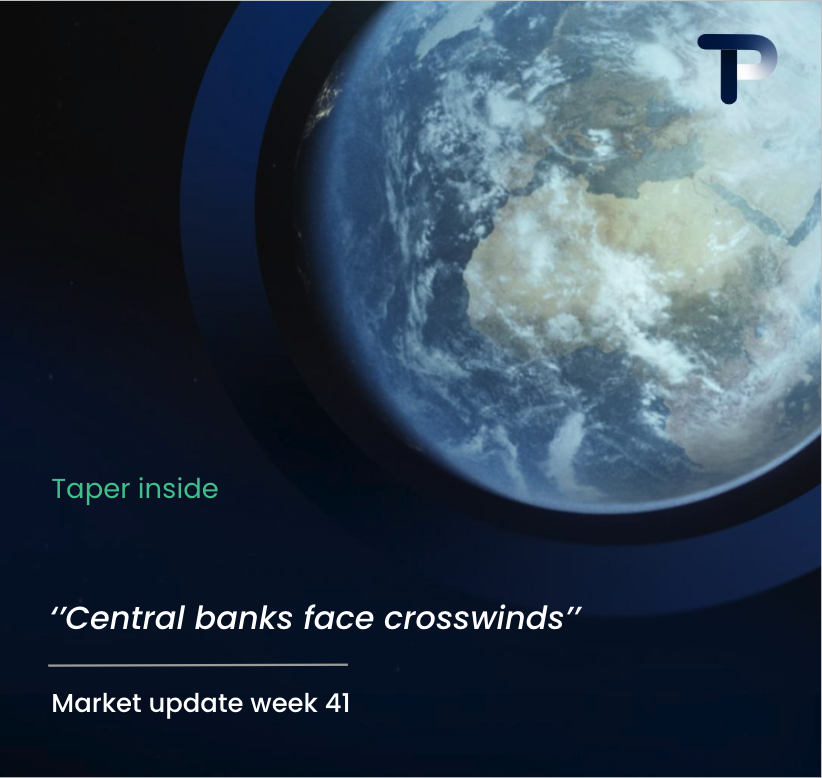Trade finance supports export businesses by providing the working capital, risk mitigation, and payment security needed for international transactions. Through instruments like letters of credit, export financing, and documentary collections, trade finance bridges the gap between production costs and payment receipt, enabling exporters to fulfil orders, manage cash flow, and expand into global markets with confidence.
Understanding Trade Finance for Export Businesses
Trade finance forms the backbone of international commerce, providing the financial instruments and services that make global trade possible. For export businesses, these specialised financing solutions address the unique challenges of selling goods and services across borders.
The fundamental challenge in export operations lies in the time gap between production and payment. When you export goods, you typically need to manufacture products, arrange shipping, and wait for payment from international buyers. This process can take weeks or months, creating significant cash flow pressures.
Trade finance solutions bridge this gap by providing immediate access to working capital. Whether through pre-shipment funding to cover production costs or post-shipment financing against invoices, these instruments ensure your business maintains healthy cash flow throughout the export cycle.
The connection between financing solutions and international trade success extends beyond mere cash flow management. Trade finance instruments also provide risk mitigation, helping protect against non-payment, political risks, and currency fluctuations that could otherwise derail export operations.
What is Trade Finance and How Does it Work for Exporters?
Trade finance encompasses a range of financial instruments designed to facilitate international transactions by reducing risks and providing working capital. For exporters, these mechanisms create a secure framework for conducting business with overseas buyers.
Letters of credit represent one of the most widely used trade finance instruments. When an importer’s bank issues a letter of credit in your favour, it guarantees payment upon presentation of compliant shipping documents. This removes the risk of non-payment and provides assurance that you’ll receive funds once goods are shipped according to agreed terms.
Documentary collections offer another pathway for securing payment. Under this arrangement, your bank forwards shipping documents to the buyer’s bank, which releases them only upon payment or acceptance of a time draft. This process ensures buyers cannot take possession of goods without fulfilling their payment obligations.
Export credit facilities provide direct financing against your export receivables. Banks advance funds based on confirmed export orders, allowing you to access working capital immediately rather than waiting for buyer payment. These facilities often include both pre-shipment and post-shipment components.
The mechanics involve your bank or financial institution assessing your export contracts, creditworthiness, and buyer quality. Once approved, funds are made available according to the specific terms of each instrument, whether as immediate advances, guaranteed payments, or secured collection mechanisms.
How Does Export Financing Help Businesses Manage Cash Flow?
Export operations create unique cash flow challenges that can strain even profitable businesses. The extended payment cycles inherent in international trade mean you’re often funding production, inventory, and shipping costs months before receiving payment from buyers.
Invoice financing addresses post-shipment cash flow needs by advancing funds against outstanding export invoices. Once you’ve shipped goods and raised invoices, banks can advance 70-90% of invoice value immediately, with the balance paid upon buyer payment minus fees.
Pre-shipment funding tackles the earlier stage challenges by providing working capital to fulfil export orders. This financing covers raw materials, production costs, and initial logistics expenses, ensuring you can complete orders without straining internal cash resources.
Post-shipment finance bridges the gap between goods dispatch and payment receipt. Whether through invoice discounting, export factoring, or receivables financing, these solutions convert future receivables into immediate working capital.
| Financing Type | Timing | Purpose | Typical Advance Rate |
|---|---|---|---|
| Pre-shipment Finance | Before production/shipping | Working capital for order fulfilment | 70-80% of order value |
| Post-shipment Finance | After goods dispatch | Bridge to payment receipt | 80-90% of invoice value |
| Invoice Financing | Upon invoice raising | Immediate cash against receivables | 75-85% of invoice amount |
These financing solutions transform your export receivables into predictable cash flow, enabling better financial planning and reducing the working capital burden of international trade.
What are the Main Benefits of Trade Finance for Export Growth?
Trade finance delivers multiple strategic advantages that directly support export business expansion and long-term growth. These benefits extend far beyond simple cash flow management to encompass risk reduction, competitive positioning, and market development opportunities.
Risk mitigation stands as perhaps the most significant benefit. International trade involves numerous risks including buyer default, political instability, currency fluctuations, and shipping delays. Trade finance instruments transfer or reduce these risks, providing greater certainty in export operations.
Payment security through letters of credit and documentary collections eliminates buyer credit risk. When reputable banks guarantee payment, you can confidently ship goods knowing payment is assured upon document compliance. This security enables business with new buyers and expansion into unfamiliar markets.
Competitive positioning improves when you can offer buyers attractive payment terms. Access to trade finance allows you to extend credit periods, accept letters of credit, or provide flexible payment options that may be necessary to win international contracts against competitors.
Market expansion opportunities multiply when cash flow constraints no longer limit your ability to fulfil large orders or enter new territories. With adequate financing facilities, you can pursue growth opportunities that would otherwise exceed your working capital capacity.
Relationship building with international buyers becomes easier when you can accommodate their preferred payment methods and trade terms. Flexibility in commercial arrangements often proves decisive in establishing long-term export partnerships.
Key Takeaways: Maximising Export Success with Trade Finance Solutions
Successfully leveraging trade finance requires understanding which instruments best suit your specific export operations and growth objectives. The key lies in matching financing solutions to your cash flow patterns, risk tolerance, and market requirements.
Consider your buyer profile when selecting trade finance instruments. Established buyers with strong credit ratings may accept documentary collections, while new or higher-risk buyers might require letters of credit. Adjust your approach based on buyer relationships and market conditions.
Evaluate your working capital needs across the entire export cycle. Pre-shipment financing might be crucial if you lack sufficient capital to fulfil large orders, while post-shipment solutions could be more relevant if production capacity isn’t the constraint.
Build relationships with financial institutions that understand international trade. Banks with dedicated trade finance departments and global networks can provide more sophisticated solutions and better support for your export growth ambitions.
Strategic implementation involves starting with basic instruments like export invoice financing, then expanding to more complex solutions as your international business grows. This progressive approach allows you to build expertise while accessing increasingly sophisticated financing options.
For businesses regularly conducting international payments in multiple currencies, partnering with specialists who understand both trade finance and foreign exchange can streamline operations significantly. We at TaperPay combine trade finance expertise with multi-currency capabilities, helping export businesses manage both their financing needs and currency risks through integrated solutions designed specifically for internationally active SMEs.
Frequently Asked Questions
How do I know which trade finance instrument is right for my export business?
The choice depends on your buyer relationships, cash flow needs, and risk tolerance. For new or high-risk buyers, start with letters of credit for payment security. If you have established buyer relationships, documentary collections may suffice. For immediate working capital needs, consider export invoice financing or pre-shipment funding based on whether you need funds before or after shipping.
What documentation do banks typically require for trade finance applications?
Banks generally require export contracts or purchase orders, financial statements, buyer credit information, shipping documents, and details about your business's export history. For letters of credit, you'll need the LC terms and compliance documents. Having organized records of past export transactions and strong financial documentation significantly speeds up the approval process.
Can small export businesses access trade finance, or is it only for large companies?
Trade finance is accessible to businesses of all sizes, including SMEs. Many banks offer simplified trade finance products specifically designed for smaller exporters. The key is demonstrating stable export activity, good buyer relationships, and sound financial management. Start with basic instruments like export invoice financing before progressing to more complex solutions.
What happens if my buyer disputes the documents under a letter of credit?
Document discrepancies are common but manageable. If your documents don't comply exactly with LC terms, the issuing bank may refuse payment initially. You can often resolve minor discrepancies by correcting documents or getting buyer approval for variations. Always work closely with your bank's trade finance team to ensure document compliance before presentation.
How much does trade finance typically cost, and how do I budget for these expenses?
Costs vary by instrument and risk level, typically ranging from 1-4% annually for financing facilities, plus transaction fees. Letters of credit might cost 0.5-2% of transaction value, while invoice financing could be 2-6% annually. Factor these costs into your export pricing and compare them against the benefits of improved cash flow and reduced risk when evaluating profitability.
What are the most common mistakes exporters make when using trade finance?
The biggest mistakes include inadequate document preparation leading to LC discrepancies, not matching financing terms to cash flow needs, and failing to understand buyer payment preferences. Many exporters also underestimate the time needed for document processing or don't maintain proper communication with their banks throughout transactions. Proper planning and professional guidance help avoid these pitfalls.
How can I protect my business against currency fluctuations when using trade finance?
Combine trade finance with foreign exchange risk management tools like forward contracts or currency options. Many trade finance providers offer integrated solutions that include FX hedging. You can also negotiate contracts in your home currency when possible, or use multi-currency accounts to manage exposure. Consider working with providers who specialize in both trade finance and currency risk management for comprehensive protection.
Hi there! 👋 I see you're reading about multi-currency IBAN accounts for supply chain payments. Smart choice - these accounts can save businesses 2-4% on every international transaction!
What best describes your current situation with international supplier payments?
Which of these challenges are you currently facing with international payments? (Select all that apply)
What's driving your interest in multi-currency payment solutions? Tell us about your business goals or challenges.
Great! To help us understand your specific needs better, could you share more details about your international payment volume or any particular requirements?
Perfect! Let's connect you with one of our international payments specialists who can show you exactly how Taper's multi-currency IBAN accounts can save you money and streamline your supply chain payments.



